* (restored)

‘Pedro Costa is a director who I can only describe as the Samuel Beckett of world cinema: and even that comparison doesn’t quite convey how severe and how uncompromisingly difficult his movies have latterly become. This is the Portugese film-maker Pedro Costa – a cult master, a figure who is widely considered on the festival circuit to be for hardcore auteur followers only. A Pedro Costa film does not get a “release”. It does not “do business” – any more than a piece by Edgar Varèse rules the iTunes chart. I myself have seen critics and writers at festivals gird their loins reasonably happily for a Béla Tarr film. But at the words “Pedro Costa”, they flinch. A haunted look comes into their eyes.
‘Now, I can understand this. But considering the arc represented by Costa’s major features O Sangue, or Blood (1989), Ossos, or Bones (1997), No Quarto Do Vanda, or In Vanda’s Room (2000) and Juventude Em Marcha, or Onward Youth (2007), I now believe that his career arc is one of the most fascinating in modern cinema. Following this career is not, however, easy and Costa does not make it easy, increasingly setting his films in the collapsing rubble of Fonthainas, Lisbon’s grimmest slum. He favours interminably long shots, long silences, long aimless semi-audible conversations between semi-comatose drug addicts: like watching a Big Brother live feed direct from some of the most poverty-stricken places in Europe. When Onward Youth was briefly shown in the UK last year, it appeared under the title Colossal Youth, and the trade press cheerfully dubbed it “Colossal Bore”. My colleague Cath Clarke wrote about this film last year with great insight.
‘This director increasingly contrives scenes in cramped rooms in semi-darkness, shot from below, with perhaps one light-source in the form of a window in the top right corner of the frame, which glows without illuminating the scene. His most recent film is Ne Change Rien, which applies this technique, eccentrically, to a film about the singing career of the French film star Jeanne Balibar, who is shown rehearsing, performing and recording in a weird crepuscular darkness.
‘Pedro Costa’s work has evolved from conventional dramatic movie-making into an experimental docu-installation form, which is something between a real-time “reportage” cinema and an exhibition of animated portrait images. However difficult and punishing his films are, I am becoming weirdly hooked on them. They deserve a hearing from people who are open-minded about cinema as an art form, and particularly as an experimental art form.
‘Blood (1989), is Costa’s first film, made in black-and-white, about the relation of two brothers and their father. It looks beautiful, and is clearly influenced by Truffaut’s The 400 Blows, and I think also has something of Buñuel’s Los Olvidados. It could have been made 40 or even 50 years ago, and Costa contrives a Nouvelle Vague feel, along with a Hollywood-ised reference to Nicholas Ray and maybe Charles Laughton’s Night Of The Hunter.
‘Bones (1997) is, I think, Costa’s best film. Maybe it’s even some sort of masterpiece: a dark, mysterious and mesmeric movie, shot in colour and set in Lisbon, among the urban poor. The faces that Costa captures are compelling, and disquieting, the kind of faces you would see in an unsettling dream: particularly the young woman at the very beginning, and also the face of Tina, who has just had a baby, and whose partner, played by Nuno Vaz, takes it away to try to get rid of it, trying first to give it to the hospital nurse and then to a prostitute. They are like the faces of ghosts, or faces of the dead. The atmosphere of Bones is extraordinary, like a horror film without the horror, or like a social-realist version of David Lynch’s Eraserhead.
‘Like many of Costa’s films, it has been wearily or amiably dismissed as miserabilism – and yet this isn’t how I responded to it. The film is about poverty, yes, and this is a subject which some people in both the movie business or the journalism business think is bad taste, as if poverty doesn’t really exist all that much and to emphasise it is a callow pose or crass exaggeration of style. Costa’s film takes poor people seriously and does not apologise for the moral and even spiritual seriousness of what it is doing. Watching this, I remembered a resonant line from Dickens’s Bleak House: “What the poor are to the poor is known only to themselves and to God.”
‘With In Vanda’s Room (2000) and Colossal Youth (2007), Costa’s work moves to a dauntingly austere mode, a mode in which traditional cinephilic references are much less useful. To continue the Beckett analogy, Blood represents his “Molloy/Watt” phase, the early phase in which his work is at its most traditional and accessible. Bones is the “Godot” phase, in which his identity becomes strongest and most distinctive, and yet still accessible in normal cinematic terms, and In Vanda’s Room and Colossal Youth are his opaque and difficult, later phase, his “Imagination Dead Imagine” phase.
‘In Vanda, we see the return of two personae from Bones. They are the sisters Zita and Vanda Duarte, now overtly playing themselves, and in fact the film now sheds the ostensible fictional mode of Bones, and now becomes far more of a documentary portrait. Zita – whose face in closeup was so haunting at the beginning of Bones – and Vanda are now fully paid-up heroin addicts. Long, long scenes show them in their dark, cramped, squalid room in the Fontainhas slums of Lisbon, doing smack and talking inconsequentially about nothing much. The movie itself, with its series of fixed camera positions, is closer in spirit to an exhibition of photography, a succession of cinematic tableaux. The vivid, ghostly close-ups of Bones do not feature.
‘The people, living fragmented and embattled lives, are shown in tenements which are in the very process of being torn down. Yet there is no positive spirit attached to this, no sense that the Portugese state is moving them to better quarters: just a grim feeling that these houses are awful and even these are being destroyed. In one scene, taking place in crepuscular gloom, one man complains of a fear of death, and another says to him: “The bad never die. It is the innocent who die” – a very Beckettian line, especially when you realise that it is meant to be reassuring, and that the speaker considers himself and his companion to be one of the “bad”.’ — Peter Bradshaw
___
Stills
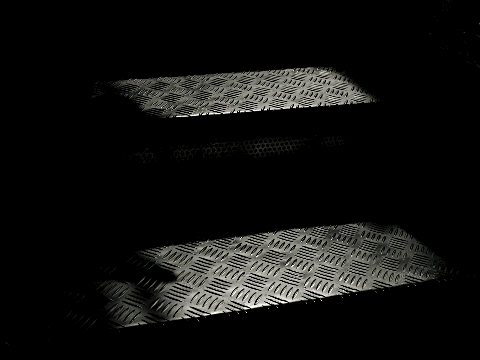
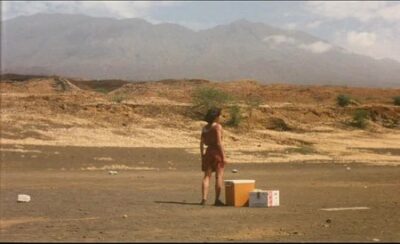
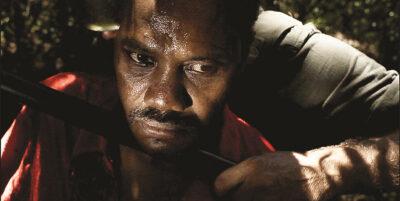
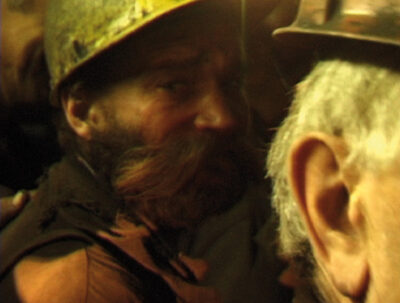
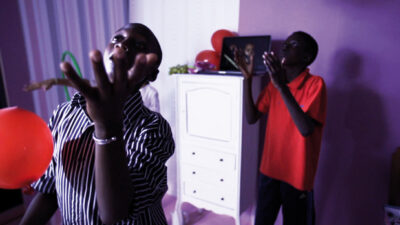
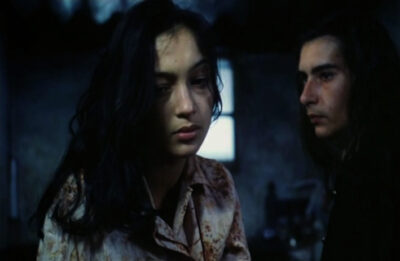
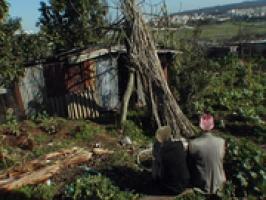
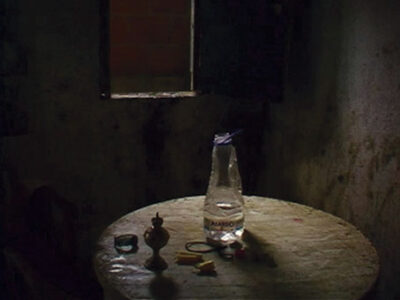

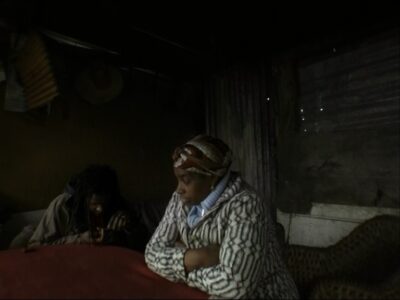
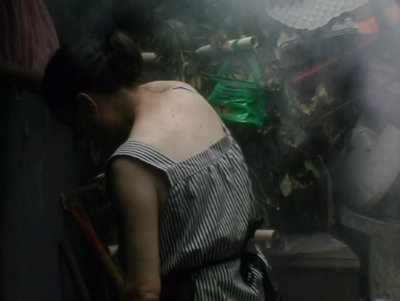
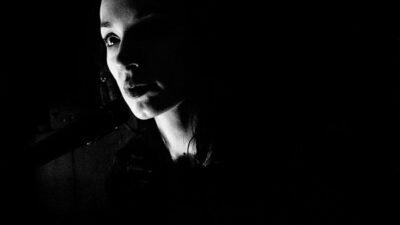
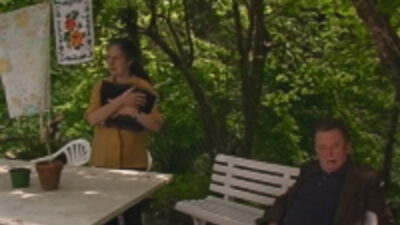
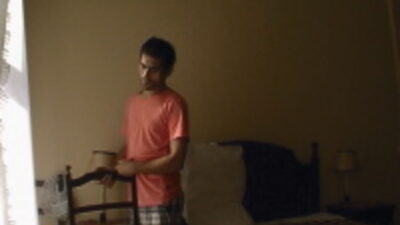
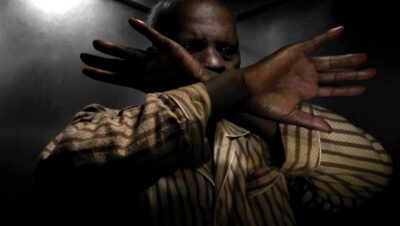

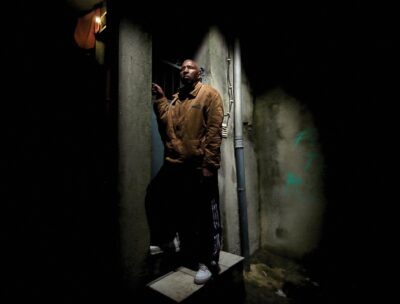
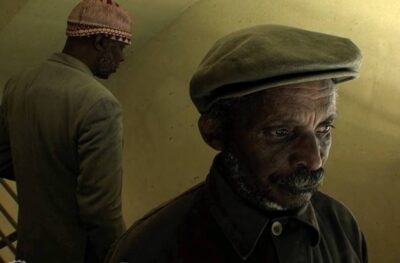
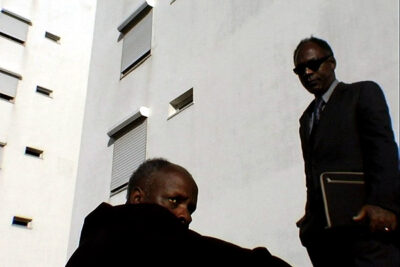

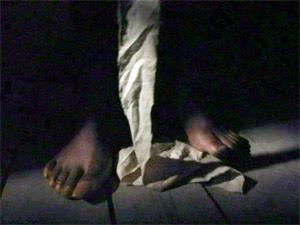
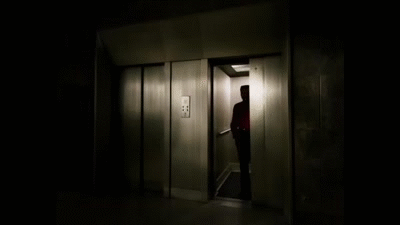

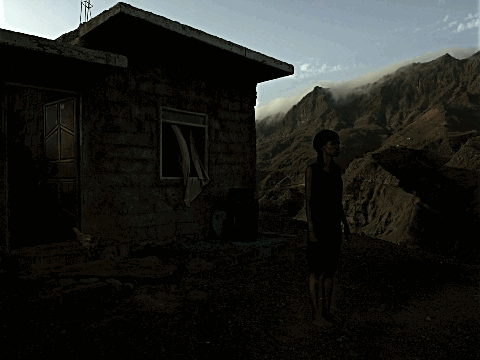
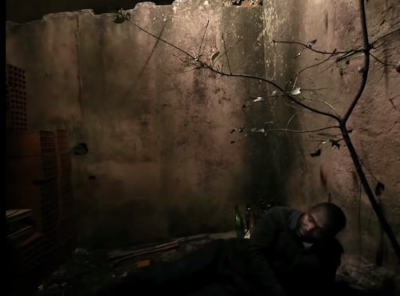
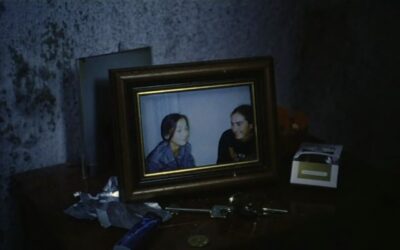
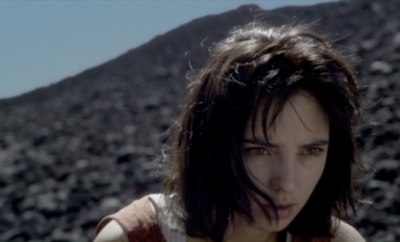

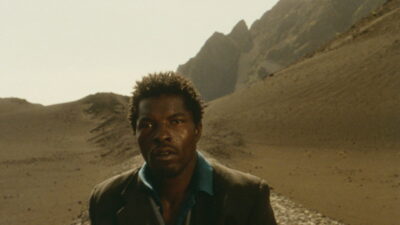
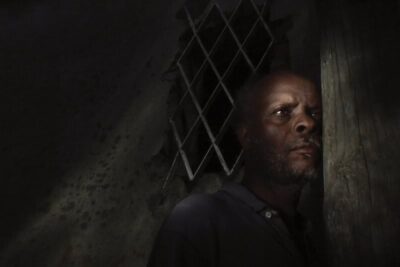



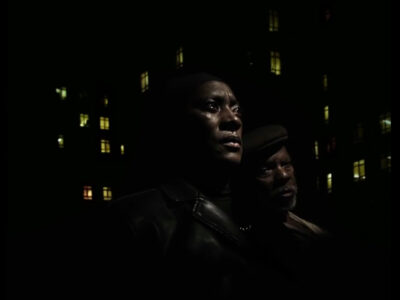

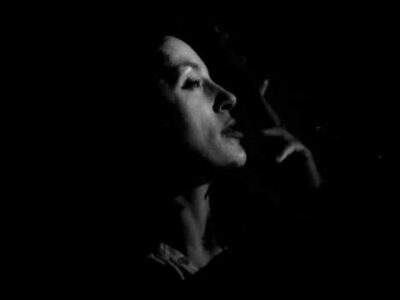



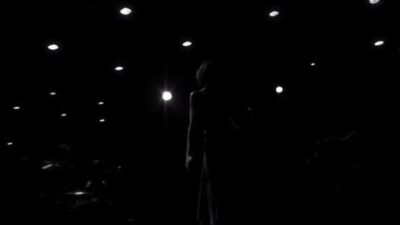



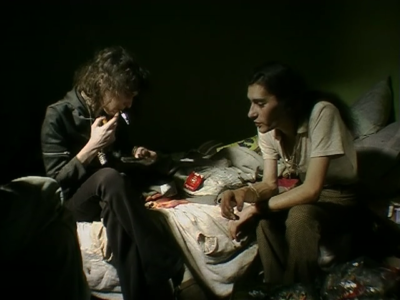
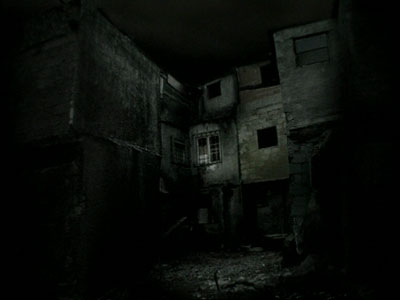

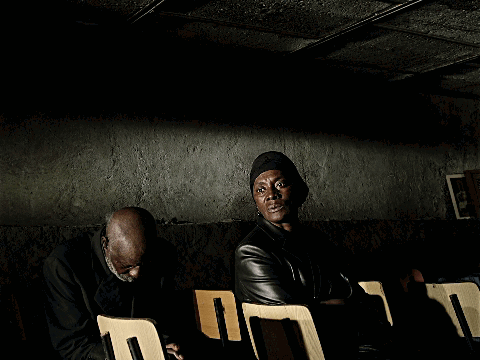
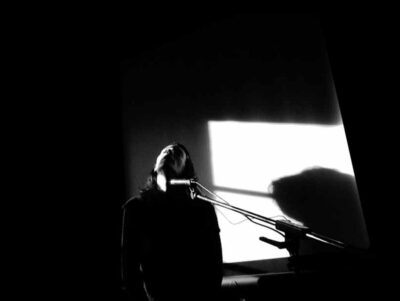

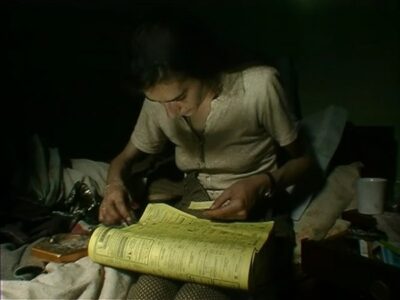
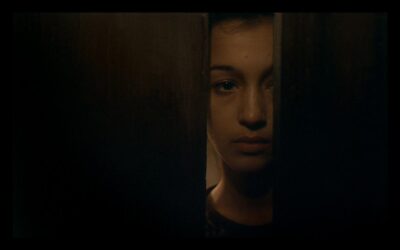

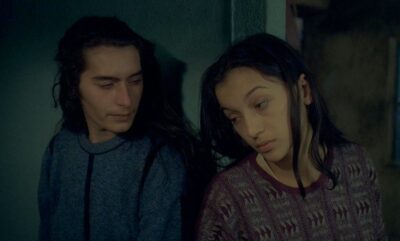
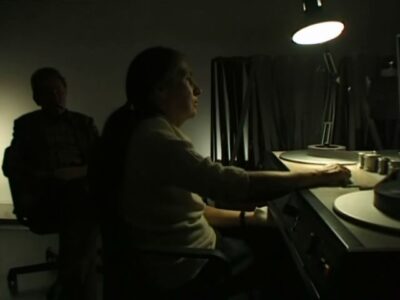

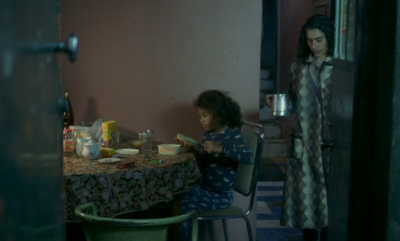
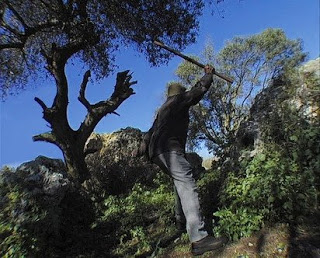
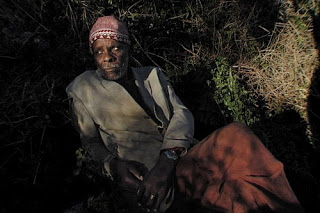






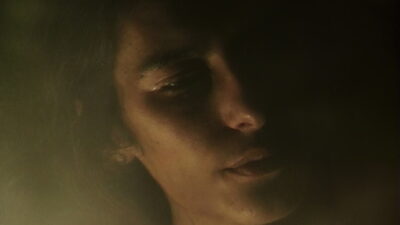
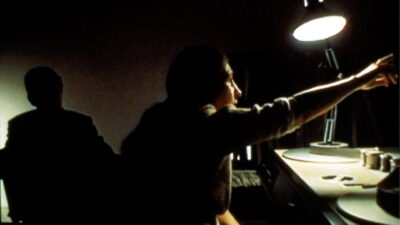
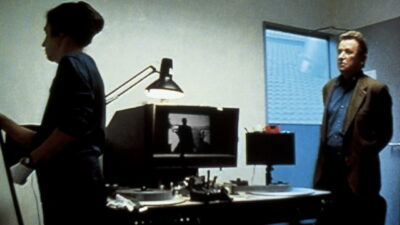
_____
Further
Pedro Costa @ IMDb
Pedro Costa’s 10 favorite films
Pedro Costa: Portuguese director who fashioned Gil Scott-Heron’s film prayer
Letters from Fontainhas: Three Films by Pedro Costa
Colossal Works: The Films of Pedro Costa
Interview: Pedro Costa @ Film Comment
Pedro Costa by Michael Guarneri @ BOMB
Pedro Costa page @ Facebook
Let Us Now Praise Famous Men: The Films of Pedro Costa
‘Films of the Future [on Pedro Costa]’, by Jonathan Rosenbaum
Adventure: An Essay on Pedro Costa
A Cinema of Refusal: On Pedro Costa
Standing on Opposite Sides of the Road: Pedro Costa on Horse Money
The Politics of Pedro Costa
Pedro Costa: The “Unknown” Auteur Deals Out Horse Money
Pedro Costa @ TSPDT
In the shadows of catacombs: a conversation with Pedro Costa
Past, Moving Forward: The Little Theater of Pedro Costa
PEDRO COSTA ON THE SECRETS OF WARHOL
A Desperate Utopian Dream – Pedro Costa: an Introduction
ON REVENGE AND TRAGEDY IN CINEMA AND LIFE
_____
Extras
HBO Directors Dialogues: Pedro Costa
Jeff Wall on Pedro Costa
Masterclass de PEDRO COSTA
Pedro Costa’s Ossos: Video Essay – The Seventh Art
______
Interview
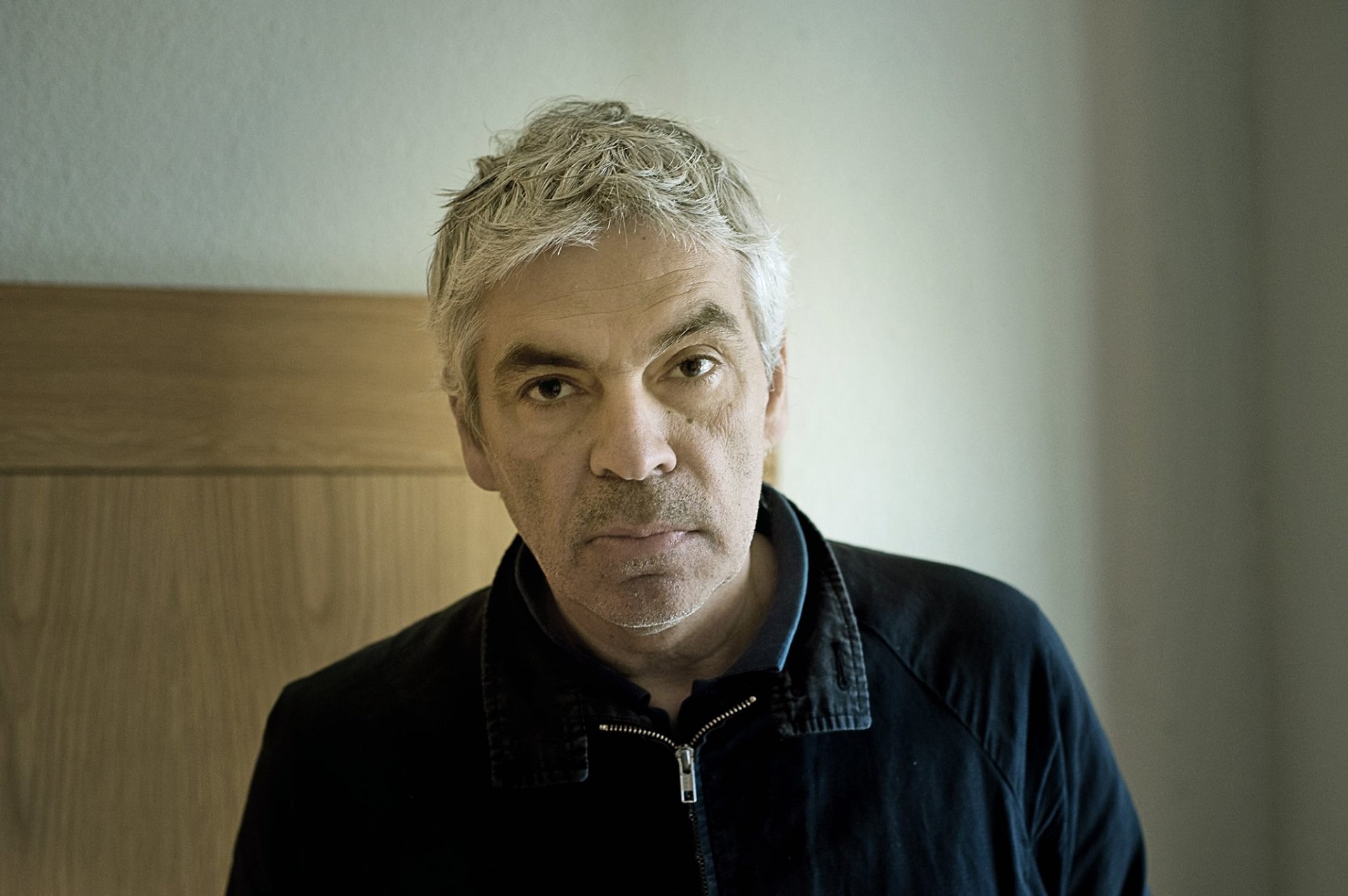
NOTEBOOK: What was the difference between making Ne change rien—which is about working to make music—and Where Does Your Hidden Smile Lie? , which is about making a movie?
PEDRO COSTA: I could answer it another way. For the film about Danièle [Huillet] and Jean-Marie [Straub], that began as a request from Cinéma, de notre temps, and that began as a 60 minute film for the TV series in a certain format that I should more or less respect. When I prepared myself to shoot the thing, we really prepared. There was a film [Sicilia! ], there was a declaration of film production, and I was a bit afraid because I had this idea that I couldn’t to shoot Danièle and Jean-Marie shooting their film or being on a set because you can’t see anything. We either had to see the work with the actors—you could probably see something there—or the editing. So I chose the editing, knowing it would be very difficult technically, just because it takes place in a dark room, and the concentration involved. And, above all, Jean-Marie and Danièle, who I knew a little bit before, but I had an image of what it could be. So I had sometimes two cameras, I had someone assisting me with the cameras; we were there always, always from 9-7, so we ended up with 100 hours or more of footage, just because I wanted to have it all. I was afraid of missing that moment.
For this project, it was a bit different, there was no film, and there is no film still.
NOTEBOOK: There is an album.
COSTA: There’s an album, but there’s never a moment I said to Jeanne [Balibar] or the musicians “I’m doing this to make a feature, I’m doing a documentary.” It began because I knew Jeanne, apart from the fact that she’s certainly the actress today I most admire. She kept inviting me to things, to a theater play, or “come see this, even if you don’t like theater,” that she was going to be in the studio and come spend some days; simple things. There was a moment when I said “yeah okay I’ll come;” probably I didn’t even say I’ll bring my camera, I just arrived with my friend who does the sound and the musicians weren’t surprised. And we were there as the other musicians were, the technicians. So there’s this formality with Danièle and Jean-Marie that was not here. I don’t want to say the work with Jeanne was lighter or more superficial, but it’s a bit different than the work done from the editing of the film and especially Jean-Marie and Danièle’s methods. First, in this film, there’s much more people around, even if you don’t see it on screen, there’s a lot of intrusion. You can feel it a bit in some moments, there’s guys testing, some rock sounds, even some dispersion.
NOTEBOOK: The way the soundtrack works, you are never quite sure what the audio source is, whether it’s coming from what’s live on camera, or if it’s a playback loop, or if it’s off-camera.
COSTA: Exactly, there’s friends visiting, there’s people just sitting around. If the shots were wider or if my camera moved like in One Plus One, you could see the same thing, guys sitting around in funny hats. Of course, Jeanne and Rodolphe [Burger]—the corpus of the thing—were as concentrated and anxious as Jean-Marie and Danièle were, and for me that felt familiar. I saw the same protection. What I like about this film, and what related to Where Does Your Hidden Smile Lie?, is the generosity they share. “If you fail, I’ll fail”—very simple. Even if I don’t like the projection here [in Cannes], if you see the film with a good print and good sound in a smaller theater, you’ll see the eyes, which are very important. Small things in Rodolphe’s attention and protection, that’s very obvious. There’s a link, a bond between him and the other guy, the bass guy, that’s very close, almost an out-of-time bond. There’s something very touching about that.
NOTEBOOK: The interaction between Jean-Marie and Danièle in Where Does Your Hidden Smile Lie? is conversation. It’s about the making of Sicilia! , but it goes far beyond that, whereas in this film, all dialog is strictly about the sound and getting the right sound, finding that tenor in construction and repetition.
COSTA: I was present for all the moments when you see Jeanne practicing the Offenbach opera, and that is probably the part of the film where I have more rushes. There you can see the same thing as between Jean-Marie and Danièle, the same severity, strictness, some very funny light tones, some erudition, there’s more moments like “think of this Mozart piece,” but then building the film, putting the pieces together, one part I was afraid of was charging these scenes so much, too much. It’s a film about a form, I think, and it’s Jeanne’s form—tempo—and if I would put more of the opera or the rehearsals, it would just become…I don’t know if I had the material to be that kind of film. Jeanne says it’s more like Party Girl, but the gang, you know in They Live By Night when they go to the cabin in the forest and stay for four days? It’s Nick Ray, it’s [Robert] Siodmark. They’re runaways, one has a guitar…they are running from something. It could be called The Fugitives.
NOTEBOOK: Can you talk about your visual approach to the project? You shot it yourself on digital in color, and then printed it on film. I’ve seen digitally shot videos projected here in Cannes digitally, but I’ve never seen one of your digital films projected that way.
COSTA: I’ve done four or five films like this, and now I’m doing video, color—not HD, just regular digital—and then I do the transfer to 35mm. The problem with this film was that I wanted real 35mm, not color stock, but the real black and white negative, the silver nitrate. It’s pretty expensive; five years ago you had Agfa, Kodak, Fuji, now you only have Kodak. The lab in Paris told me that in two years you couldn’t do this, it’s over, it’s too expensive, it’s too dangerous.
NOTEBOOK: It’s a beautiful effect though, it reminds me of the black and white version of that high contrast digital in Godard’s In Praise of Love, the vibrancy of the highs and lows. Did you light it yourself?
COSTA: I did some things, but I brought no equipment, really. I just improvised again, more like I did in In Vanda’s Room, with some aluminum foil or light boards off-camera. That’s one funny thing, sometimes the light is sun, you think it’s a lamp but it’s the sun, it’s real, bright sun. That’s Hollywood; I mean the good Hollywood. And sometimes it’s night and you think it’s the sun…so I just helped a little bit. The shine in the eyes, things like that, very, very small things. I was worried, actually, because I often have the tendency to pull back…
NOTEBOOK: But some of the close-ups are incredible, the shot that’s also in the shorter version of this film, that profile of Jeanne that looks like Dietrich-Sternberg lighting…I don’t know if that was the lighting of the club she was singing at or if it was your lighting.
COSTA: That was the club lighting plus a little bit—maybe—of manipulation, but just little things, density, contrast. That’s a funny shot.
NOTEBOOK: Is it sync sound or was the soundtrack remixed?
COSTA: Everything’s direct. There’s only one shot—the one in Japan—where the sound is from elsewhere. The image is something I did in Japan, I went to a cafe in the morning where we shot the concert in Japan. I went with Nobuhiro Suwa to Naruse’s grave, and this cafe faces the cemetery. The door in this shot, you can see it in the window…there’s a moment where you can almost see the gate of the cemetery. I went there and saw the grave and then I went for coffee and these two women were there, and they looked at me and I looked at them. And I set the camera simply on the table, I had no tripod, they smiled, I smile—Japan! But I had to add sound in the end, so when I mixed the film, I added this very tiny, tender sound. Every time I see this shot it reminds me of Jacques Tati, I don’t know why. But there’s a lot to be said about this shot. I would like to do a whole film like that—not silent—but there’s something there.
NOTEBOOK: Naruse’s favorite actress, Hideko Takamine, once said that Naruse told her that his ideal film would be one where she stars against blank white backdrops. In a way, Ne change rien reminds me of this project, bodies hanging against a minimalist abstraction.
COSTA: We tried to find something that’s under the surface of this film, not even a story, there’s more than that, something about fear, the light and blackness. I’m sure it’s not a documentary in that sense, a documentary about work, it’s just about trying to get somewhere. But that comes from Jeanne’s fragility, she’s a bit misplaced at the opera, she’s a bit misplaced in tempo with the guys, the pros.
NOTEBOOK: Did you complete this film a while ago? Because I first saw footage from it two years ago.
COSTA: We shot it a long, long time ago. The first time was a concert in 2005, I believe. And then every year I shot more, in the way I told you, I came and went. The last time I shot was late 2007. I stopped for a while, I had a short film to do, and then I came back to this, sat down with the editor. From November until March I was editing and handling the lab things.
NOTEBOOK: Was Ne change rien the same as with In Vanda’s Room and Colossal Youth where you had to sift through hundreds of hours of footage?
COSTA: No, we had much less. I had something like 80 hours for this film, because all the concerts are just an hour and I did not want to make a concert film where you go backstage or in the bus. I just shot the moments. Even the tiny small things that are in the film when the practice is over and the team goes to prepare food or whatever, really the rush just ends there. It’s like Warhol, an experimental thing where you go to the end of the tape. I had much less material.
NOTEBOOK: Was there much interaction between you and the musicians? If I remember correctly, you talk to Jean-Marie in Where Does Your Hidden Smile Lie?.
COSTA: Yes, with Where Does Your Hidden Smile Lie? the beginning was difficult, I was a bit lost in how to do it, and I found the door very, very late. But in this one, no, sometimes I told Jeanne something, but she’s an actress so she knows what to do, she slightly turns a bit more to the light—but just for the light, not for the mise-en-scene like “let’s do a scene like this”—I just served the thing, just being there, like a public service. [laughs]
NOTEBOOK: Are you working on something now? The two shorts came after this was shot.
COSTA: The shorts came in between.
NOTEBOOK: I love those shorts especially because of their length. When you were in New York for your retrospective, you talked about wanting to set up a television station in Fontaínhas and these shorts felt like episodes in a potential television series.
COSTA: I would love to do that, but it’s impossible. Every day it’s more impossible. But to see this idea more and more contemplated from here in Cannes it makes so much sense. I’ll do another short, more a museum thing, and then I’ll go back to Japan to do another short film, I don’t know the idea, but it will be a film with other directors, probably Godard and Sokurov.
NOTEBOOK: From In Vanda’s Room to Colossal Youth there’s a move towards more…I want to say fictional elements, but not really fictional, just a move away from specific documentary that allowed for room of mystery. The two shorts definitely continued in this vein.
COSTA: The films with my gang in Fontaínhas—it’s not only me—they need that “fiction,” or what we call fiction, they need it badly. That’s very obvious and natural, this necessity, and it explains everything. We know each other very well now, it’s been a long time–Vanda, Ventura, all the boys…well they’re not boys anymore. At the beginning it was like “let’s do the cop,” and “let’s do the chase,” and “okay another boring one,” and finally they are proposing—as in Tarrafal. I said I have this money, what shall we do? The second day this guy came with this letter about being expelled from the country, so let’s do something around that, he said let’s do that story, his story. I said where should we do it and he said “not here,” “let’s find a place.” That was the first time they said let’s imagine something, let’s imagine our territory. The problem is they don’t have a territory; they are between the new neighborhood, a no-man’s-land, and a freeway.
NOTEBOOK: But there’s that amazing sequence in the forest in those two shorts, where is that?
COSTA: [Laughs] That forest is…[indicates a small square]
NOTEBOOK: Oh, so just outside the frame there’s nothing?
COSTA: It’s ridiculous! But they needed that, and they wanted that. So now I think I should work on that, hear them much more, and go that direction. I think it will get closer to something…”purer” is not the word, but something verbal I’m sure. They want to tell the story with four or five elements, I don’t know what they are…I don’t want to talk about abstraction or minimalism but we’ll probably go that way. So you are right; when I started, even with Ossos, I really wanted to see something, find out, put things in relation to find out about them. But now it’s free. We don’t care any more about a statement.
There used to be even a critique in what we were doing, and they say we should show a bit more, about how the other half live, and I said “no, this is just me looking at you.” Now I don’t care and they don’t care, and it’s about something else. It’s freer. I hope the form will be freer. The monster is that it relates much more to the past than the present. They don’t care much about the present, that’s just it. They don’t think a second about the future, they are completely numb, and violent, and much more violent than before. They are turning their backs and it’s all about the past. It’s all about missing people and missing the land. That’s why I want to go back now.
NOTEBOOK: That sounds like a much more integrated approach to collaboration than what you are doing in Ne change rien or the Straub-Huillet film.
COSTA: Yes, and it’s also much wider, more vast. In the beginning it was Vanda, it was a girl, then it was her sister and her friend. Now everybody is Vanda.
NOTEBOOK: Does that make Ne change rien, this kind of film, more manageable than your work in Fontaínhas?
COSTA: These are really prototypes, all of them, and this was unique in that it comes from no declaration of film, for the first time, not even a “let’s see” attitude. It was strange, every time I went to see Jeanne, coming with a camera. I just read a Variety critique of my film, it says it all—”Arty fans will be enchanted” or something, “normal people, run away!” It’s funny, because I know when “normal” people and Variety walk out of this film—it’s when people start working. It’s like Godard says, when people see a tiny bit of someone working in a film, it’s dead.
_____________
13 of Pedro Costa’s 17 films
_____________
Casa de Lava (1994)
‘The colonial histories of Cape Verde—and the lives many of that country’s displaced emigrants now lead in Lisbon—have taken a central role in many of Costa’s recent films, but his rarely seen second feature is the only one of his movies thus far to have actually been shot in the archipelago. Leão (Isaach de Bankolé), the comatose laborer whose removal to his home at Fogo jump-starts the film, is a clear precursor to Ventura, with whom he shares a profession and a past. But the revelation of watching the movie now is how much fierce, unblinking attention it gives to the colonists themselves: Edith Scob as an aging Portuguese woman who has made the island her ill-fitting home; Pedro Hestnes as her son; and Inês de Medeiros as the Lisbon nurse who accompanies Leão with a mixture of brashness and fear. Casa de Lava, for which Costa took inspiration from Tourneur’s I Walked with a Zombie, is one of the director’s most direct reckonings with Portugal’s colonial legacy.’ — filmlinc
Trailer
Excerpt
_____________
Ossos (1997)
‘Today, we should be able to appreciate the film both on its own terms, putting aside the works that followed, and in relation to In Vanda’s Room and Colossal Youth, the distance traveled from it to them. In and of itself, it is one of the most beautiful films of the nineties, exemplifying a current of the era’s auteurist cinema yet already reaching beyond it. The last fires of a dying European aesthetic glow in Ossos: an elliptical plot, highly composed wide shots held for a long time, the generally unmoving and silent presence of characters who preserve their mysterious density until the end. But a new energy is blowing on the embers, that of a brutal reality that auteur cinema had always avoided confronting: that impossible but oh-so-real location, those desperate people, enraged and resisting, suddenly visible, radiating a dark light. What is striking, when we consider the films that came after, is the extent to which Costa is already taking flight, despite the weight of traditional filmmaking. The people of Fontainhas—Vanda, Zita, and the others—play characters, embody parts. But Costa is already filming their pure presence in space, their strength, their resistance, capturing what is beneath the actors, the truth of the individuals. The film was welcomed by moviegoers, given a prize at Venice, praised by the critics—and co-opted by the Portuguese political class and media, seemingly stunned to discover in their city of Lisbon such a level of poverty, of which they feigned ignorance. In the career of any European auteur, Ossos would be a great first peak; for Pedro Costa, it marked the realization that he had reached a dead end, the conclusion of a certain way of making films. He could have continued in the same vein and become one of the masters of European auteur film. Leaving that well-worn path, he ventured into unknown territory, territory that politicians and the media could no longer touch. (In Vanda’s Room and Colossal Youth were celebrated by critics and festivals the world over—the latter screened in competition at Cannes in 2006—but they did not have the box-office success of Ossos. Still, they had something better: in each viewer who felt the films looking at him or her, they sparked the certainty that an essential encounter—an expansion of life—had taken place, something far beyond admiration.)’ — Cyril Neyrat
the entire film
_______________
In Vanda’s Room (2000)
‘One look at the appalling slum where Pedro Costa has set In Vanda’s Room seems comment enough. It’s a filthy, crumbling, aesthetically-nil nightmare that one assumes can only oppress the lives of the junkies, laborers and other residents who live there. But there is life in this Lisbon hellhole, and it’s being encroached upon by the “enlightened” folks who have deigned to clear the place without thinking of where the residents can go. This displacement disguised as renewal sums up Costa’s tragic sense of irony. His film is about people who live painful, desperate lives and yet refuse to budge from the fates they may or may not have chosen but decide to play out either way—people poised on the brink of self-pity who never fall off into the abyss, and who carry on in the face of addiction, invisibility and a general ennui that mere social realism can’t contain.’ — Travis Mackenzie Hoover
Trailer
Excerpt
Excerpt
_______________
Où gît votre sourire enfoui? (2001)
‘Pedro Costa shot this portrait of filmmakers Jean-Marie Straub and Danièle Huillet at work while they were re-editing the third version of Sicilia! at the Studio National des Arts Contemporains in Le Fresnoy. A work of friendship and dedication and one of the greatest lessons of cinema.’ — Courtisane
Excerpt
Excerpt
______________
6 Bagatelas (2001)
‘Pedro Costa takes six unused scenes of Où gît votre sourire enfoui? and put them into a new context. These fragments are not only «bagatelles», but a special look at Danièle Huillet and Jean-Marie Straub.’ — viennale.at
the entire film
________________
The End of a Love Affair (2007)
‘A man is standing at the window, holding a chair. There are wafts of street noise, and occasionally the curtain flutters. A dog is barking. Then, elegiac music sets in, a lavish string arrangement, joined by Billy Holidays love-torn, tragic voice. She is singing «The End of a Love Affair», and the entire agony of the end of her life resonates in it. The man at the window has meanwhile sat down on his chair, and the sad insistence of the song portrays his emotions. Is there something like the ghost of a smile flitting over his face? «And the smile on my face isnt really a smile at all», Holiday sings, and in the end all that is proven is the manipulative power of the combination of image and sound.’ — Viennale.at
the entire film
_______________
Ne Change Rien (2005)
‘Ne Change Rien is a bold music documentary, which pulls us into Balibar’s world without conforming. Pedro Costa offers us a film that prosaically depicts in spellbinding, tedious detail the creative lives of his subjects in their connect, disconnect, beauty, and torture. As the title, taken from an expression in Godard’s L’Histoire(s) du Cinema (1988-1998) conveys, this is a film that goes nowhere. It is not about change. It sits in a purgatory, in the static, and monotonous. Costa’s ingenuity as a filmmaker lies in his ability to so resonantly and courageously interpret this. One hopes Pedro Costa will find distribution for this film, or a means of showing it for a run in major cities—but, even if he doesn’t, this film exists in the every day, in ourselves.’ — Senses of Cinema
the entire film
______________
Colossal Youth (2006)
‘Many of the lost souls of Ossos and In Vanda’s Room return in the spectral landscape of Colossal Youth, which brings to Pedro Costa’s Fontainhas films a new theatrical, tragic grandeur. This time, Costa focuses on Ventura, an elderly immigrant from Cape Verde living in a low-cost housing complex in Lisbon, who has been abandoned by his wife and spends his days visiting his neighbors, whom he considers his “children.” What results is a form of ghost story, a tale of derelict, dispossessed people living in the past and present at the same time, filmed by Costa with empathy and startling radiance.’ — Criterion Collection
Trailer
_______________
Tarrafal (2007)
‘In the first half of “Tarrafal” we listen to a conversation between several ex-Fontainhas residents about the world of Cape Verde. The pair focuses on locations and what may still be around, but eventually the topic somehow turns to a vampire story from the area about a vampire who would give letters to people and then hunt down and suck the blood of their recipients at night, though never killing their victims. Their blood was gone, but not their lives. The second half of the short seems barely related until eventually we learn that one of the characters is going to be deported, having been sent a letter from the vampiric state of Portugal that won’t kill him but will suck out something of his life. This is matched with the film’s title, “Tarrafal,” which was the location of a concentration camp in Cape Verde also known as the “Camp of Slow Death.” The political slant of this short is obvious, but it’s only half of the project.’ — By Sean Gandert
the entire film
_____________
The Rabbit Hunters (2007)
‘ “The Rabbit Hunters” focuses on Ventura from Colossal Youth, who was only briefly around in “Tarrafal,” and instead it is somewhat like a continuation of that earlier film. Again Ventura is wandering amongst his friends and spends his time playing cards and telling stories of the past, only now he’s joined by his friend Alfredo. The pair drift through the film together until with its last nine minutes the short converges with “Tarrafal,” with the same actions taking place and using similar takes. “The Rabbit Hunters” fills in details missing from “Tarrafal” and helps to give a complete story, but while there’s some definite narrative thrust in the deportation it’s really more of a commentary about the way we choose to tell stories. Costa’s statement here is that he can come upon this same material in multiple ways and tell in some sense the same narrative. There’s always an essential question in Costa’s work about what gets told and who gets to tell it. The Fontainhas trilogy moved from the filmmaker being at an advantage in telling their story to a level of equality with the subject and eventually the subject of a film in some ways overpowering the filmmaker, with Ventura completely taking over Colossal Youth. Costa’s methodology in these shorts suggest that all methods of storytelling and editing should be considered artistically valid, whether they arrive at their observations elliptically as in “The Rabbit Hunters” or more obviously with “Tarrafal.”’ — Sean Gandert
the entire film
_____________
O nosso Homem (2010)
”Is there space for a green garden?’ ‘Not even for a house’. We revisit Fontainhas, thinking of Cape Verde, the country to which José Alberto Silva will be deported but which he’s never seen before. This is controlled, hypnotic cinema, moving between life and death, reality and fiction.’ — iffy.com
the entire film
_____________
Horse Money (2015)
‘I think that each of these supposedly cutting-edge issues is handily nullified by the mesmeric power of the films themselves, far richer and more elusive than one might guess from the critical literature. Costa has long had a dream of adapting Stevie Wonder’s Innervisions album as a film, and it seems to me that he layers and structures and sequences his films like a musician in the studio. Every aesthetic choice is lovingly tuned, from the particular sound of a given space’s quiet to the precise durations of each and every interval of time to the exact shade of yellow in the windows dotting the crushed black nightscape behind the beautiful Vitalina’s exquisite three-quarter profile. Is Costa exploiting these people and places for their phantom beauty? You bet he is. Suppressing one’s own desires and attractions in the name of a hollow ideal of moral equivalency always has and always will make for lousy art. The point isn’t the attraction, but where you take it. Too much of the rhetoric around Costa is abstract, only beginning to approach the wondrous spells and haunted refrains of the new Horse Money. The artist himself reckons that he’s turned some kind of corner with this film, and so he has. Fleeter and more mobile than Colossal Youth, with a structure built on what Murnau eloquently described as “the most fleeting harmonies of atmosphere,” Horse Money finds its way into the centrifugal force that Charles Olson identified in Melville, the sense of the “inertial structure” of the revolving world itself. I could go on rhapsodizing about the wonders of Horse Money, which becomes more alluring and impressive with every viewing: the soundtrack, so lovingly layered, in which every voice is a character and nocturnal silence is the star; the sudden apparition of the boys in the trees, gazing down intently like warring gods; the great star-crossed Vitalina; and Ventura, alias José Tavares Borges, a broken man but, it seems, proudly so—proudly here. The moving force of this film originates with Ventura himself, and the spirit of fraternity from behind the camera.’ — Kent Jones
Trailer
Thom Andersen on Pedro Costa’s “Horse Money”
_____________
Vitalina Varela (2019)
‘My friends, before it leaves the big screen, rush to see Pedro Costa’s Vitalina Varela: this is very important. We can all agree: the cinema in its near totality has turned to shit, is soulless, has sold out to that hysterical movie-trailer factory which only produces images of our tolerance for junk. But a few filmmakers find unscathed images: images that, through their political dignity, through their poetic rectitude, cut themselves off from tawdry hell; among these filmmakers, there is Pedro Costa.’ — Yannick Haenel
Trailer
Pedro Costa on Vitalina Varela, Darkness, and His Filmmaking Process
*
p.s. Hey. ** Dominik, Hi!!! Yes, from now on my teacups are going to be very stand-offish. I’m hoping Zac has made good contact with the new/other daughter possibility, but I’ll find out tonight. Oh, okay, end of March is the starting gate of the move, I guess? Plenty (?) of time to prepare, psychologically and otherwise. I hate having to move, even just across town, much less internationally, so I know your anxiety, at least to some degree, but, when the time comes, you’ll just do it, and once you’re in your refreshed new life, you’ll be inspired, I’m sure. Based on my experience. I agree with love and HH49HH, so that makes three. Love backtracking in time to just before whatever point it was that someone stole my wallet on the metro on Saturday and sewing my pocket shut, G. ** Tosh Berman, Thanks, Tosh. Tokyo! But for such a sad reason, I’m sorry. I hope you can dig around in your surroundings. I’ve never written on my phone. That sounds extremely daunting, but if anyone can crack that medium’s it’s you. Have huge fun! Check in here if you get the chance please. ** David Ehrenstein, Belated happy birthday, sir! It’s not impossible that you tricked with Bo depending on when your ‘back in the day’ was. ** NLK, Thank you kindly. I’m the exact same, i.e. revising is a perfect fit for my particular obsessive bent. It’s luxurious. Me too also on envying the speedy types. I used to do a lot of journalism and reviews, and it always took me 10+ times longer to write the simplest non-fictional screed than someone in that position should, which is a big reason why I swore off writing that kind of stuff. Ah, but Clementi spent ages editing his films, that’s the rub. The Pompidou has possibly the best film programming in Paris, and that’s saying something. Oh, god, an animated gif teeshirt, my longing is exploding. Sad about the sad ending though, but, hey, having invented the gif teeshirt easily makes up for the letdown, no? I might be like your dad if I could remember my always terrifying dreams. Other than the fact that they were terrifying. Cheers back from a chair whose back faces a windowsill where two pigeons are building a nest. ** Meg Gluth, Hi! 3/2 to 3/5, gotcha. I’m not sure what my schedule will be or how busy I’ll be yet, but we’ll find time for sure. Yes, I’m still at that pad in Los Feliz that you visited so many ages ago. Awesome! ** Bill, Hi. Yes, I’m so happy ‘The Dream Life’ is back. It’s such an extremely lovely novel. Did you ever meet Bo? He might’ve lived in SF before your time there, I’m not sure. I need to read that book on Jerome Caja. I keep forgetting to seek it. If you find what’s going on with the doc, let me know. ** Cody Goodnight, Hey, Cody! Other than having had my wallet and bank card stolen during the weekend and having live on borrowed euros and loose change until I get to LA, I’m ok. Gosh, growing up in LA, and living for a lot of that time in an area where a lot of famous people live, I’ve met or at least encountered quite a few biggies. Like I used to live on the same street as Leonardo Di Caprio, and we chatted on the street a bunch. I’ll have to fish through my memories and come up with a particularly interesting story later, I think. Deep Dish isn’t really like soup if it’s done right, or maybe it’s like a slightly soupier than normal pizza. But it’s solid, or solid-ish. I’ll start with ‘The Cremator’, thanks. Definitely sounds of interest. How’s your paper going. Ah, Nina Simone is such a genius. Unbelievable. I think my favorite of hers is ‘Live at Carnegie Hall’, but she’s insanely great. Enjoy, iow. My weekend sucked, but my week looks okay so far. Yours? ** Philip Hopbell, Hi. I agree about the Lindon books. And about the need for him to be more translated. He and I share a French publisher, Editions POL, and I’ve met him a few times, and he is just the loveliest guy. Well, you nailed Edmund in a sentence, yes, ha ha. Very nice reading list there. ‘The Cheap Eaters’ is one of the few Bernhards I haven’t read. Obviously, I will. What does your week look like? ** Katie Jean Shinkle, Katie, hi! I loved the book! I was so happy to have new work by you. It had been far too long for a big fan like myself. Thank you so much for coming in. Love, me. ** _Black_Acrylic, Yay about your wise buddy Len. Feedback, especially of the good type, makes all the difference. Weird, but it does. I’m glad you got to see your friend and her brood. If ‘Avatar 2’ doesn’t show up on a plane flight’s menu, I doubt I’ll ever see it either. ** Gick, Hi. No, I only had the destroyed laptop, well, until I got this new one. I only use my phone for texts and GPS and taking photos. It’s an older iPhone, and it’s really small. Most of the extras in our film don’t have to act, they just have to stand around or look like they’re walking somewhere believably. It’s more about the cut of their jib. I’m a workaholic too, and I’m sure I’d be depressed if, for instance, I didn’t have blog posts to make all the time. I’m feeling pretty good, kind of anxious to get everything done that needs to get done for the film shoot, which is a lot. So in a way maybe I’m too concentrated on that to feel a whole of anything, which is good, I suppose. I need to get to L. It’s been ages. I’m probably pretty easy to kidnap, but please don’t, ha ha. Have a very upbeat day by whatever means. ** Steve Erickson, The Lindon book about Guibert is really lovely. From what I’ve heard, yeah, something key seems to have drifted out of 100 gecs’ stuff, and that’s too bad. But I’ll try the LP to be sure. So sorry about your friend, but, yeah, peace of mind is ultimately more valuable than a friend if he can’t help provide that generally. Ugh. ** Dom Lyne, Hi, Dom. Yes, I’m enjoying my lack of jet lag until it returns full force on Friday when I’ll be in LA and 9 hours askew yet again. I’m learning to see the cloud as a pal. It takes some adjustment. That makes total sense about your friend. When I was writing ‘I Wished’ and thinking about George all the time by necessity, I too got very painfully close to him, and, pain notwithstanding, I really appreciated it. Love to you. ** NIT, Yay, what great news! I’ll finally get to meet you! I’ll try not to be too taxed and preoccupied with the film stuff. Great!!!! ** Nick., Hey, Nick.! What’s the new job? I’m glad it was worth partying about. Ha ha, yeah, I know exactly that effect you’re talking about, i.e. someone’s ultimateness making guys who might, in other circumstances, have been ultimate seem like interactable pieces of cake. Enjoy it while it lasts. I think my favorite birthday was either the time when I was a teen where someone arranged for me to get a ‘backstage’ tour of Disneyland and see all the behind-the-scenes stuff or back in the mid-80s when this guy I had been totally obsessed with for about 4 years and even wrote a whole novella about hoping to impress him finally gave me sex with him as a birthday present. What’s been your top birthday so far? Happy Monday. ** Right. I decided to restore this old Pedro Costa Day because it was a bit decimated by link expiration and other time-based ravages and, of course, because he’s great. See you tomorrow.




 Now available in North America
Now available in North America 
With the exception of the most recent one I think most of the major Costa. Loved em all but I think my favorite is CASA DE LAVA even though it’s early and in some ways not representative of his general aesthetic. Just something about that one really does it for me.
A really smart person I know didn’t like any of his work until this most film I haven’t seen yet. I think he said his prior work looked an art installation instead of a movie. I don’t really get that at all. He loves Ming-liang and Phillip Garrel so it’s not like he’s against that kinda film. Everyone has blind spots I guess.
This weekend I did a double feature of my first Albert Serra film BIRDSONG (which should I watch next?) and NATURAL ENEMIES with Hal Holbrook. Both were good.
*the most recent film is the only major one I haven’t seen VITALINA VARELA
Dennis, Cool! Thanks for making time for us. Can I naively offer our services for anything we can help with during our visit window? But cool, yeah let’s stay in touch with contact info etc….🖤
I saw Horse Money recently and enjoyed it a whole lot. Thanks for putting together this day!
Happy to see that my DVD supplier is sending me the Chelsea Girls tomorrow. Not sure how that works with just 1 screen but still, looking forward to it.
Dennis, Good about the data retrieval. Yeah, I’m suspicious of the cloud (“it’s just somebody else’s hard drive”), but what are we gonna do? I back up my writing stuff on a thumb drive and the cloud. And I usually send it to myself in an email.
Busy af this weekend. Soooo many errands and then Kayla and two of her friends came over and I made chicken parmesan and stuffed shells. Then we played videogames on Kayla’s Switch. Mario Kart, which I won, and Mario Party, which I lost. :'(
I’m off today for President’s Day. I’ll shoot you an email later about that thing I mentioned.
And your stuff got stolen? Wtf? Hope that resolves positively.
Hey Dennis, I’m so glad you and the blog are back!
Thanks for restoring this post. There was a PC retrospective here a wee while back and I managed to see all of his movies that were playing with English subs. It was a great experience, spending a couple of weeks submerged in his films, and culminated in seeing Horse Money in an empty cinema on a Saturday morning, which was fairly sublime. Also, the feature-length version of Ne Change Rien was pretty amazing. But I didn’t get to see Ossos and you’ve got it here, so thanks a bundle!
Happy that you got a new laptop and your data was restored. I was worrying that there might be a lot of important film stuff on the old one. Man, you got robbed! I hope that’s the last bit of bad luck you have for a long while. A guy tried to rob me last week whilst I was carrying Ari’s pushchair into her gran’s house. Seems a little rude, but luckily I didn’t understand what was happening at the time and thought he was trying to help me.
Apart from laptops and theft, how are you? I’ve been kind of okay, kind of down, but nothing new. The experimental film club I always ramble on about is making an unexpected return this Sunday, which is pretty cheering. A filmmaker called Simon Payne, who I’ve never heard of, will be showing his own films.
Hope things are good with you.
Extremely experimental but it should be interesting love,
Jamie
Hi!!
How did Zac’s meeting/discussion go with the new girl actor?
Yes, mid-March or the end of the month is the plan. Knowing that you’ve moved around quite a lot, I find your experiences really reassuring. I trust that once we have an actual apartment (and thus neighborhood) picked out, it’ll be easier to imagine living in a whole new city – country – and that’ll help with the anxiety as well.
Fuck, what’s up with these few weeks you’re spending back in Paris?! First your laptop and now your wallet… Did you have your ID and stuff in it? Love replacing your wallet with one that produces money on demand – strictly on your demand, of course – Od.
Yes! It is indeed high time you visited L – esp now that you’ve made a lovely friend in it haha… Professionally speaking tho, I’m surprised you haven’t done any events for I Wished here? I keep stumbling upon it in all the bookshops here.
Why do you think you’re easy to kidnap? I had a surprisingly upbeat day; I spoke to a painfully gorgeous boy, and now I’m writing a story about him. Do you ever feel pained by beauty and desire? Hope you had a beautiful day, too.
Has Yury had much luck reviving your laptop? I’ve been working very slowly on new music because mine starts to hiss and crackle whenever I fire up my DAW, but it’s not a big enough problem to get me to take it to the repair shop.
100 gecs will be part of my next music roundup for March, as will the new Sleaford Mods album. This is pretty good, but now that Jason Williamson is a man in his 50s whose bands’ albums land in the UK top 10, he crosses the line from righteously snotty punk to old man yelling at clouds a bit, especially when he disses other bands.
I’m probably not gonna maintain contact with my friend, but I’m not making that decision immediately. It strikes me that the relationship dynamics are borderline abusive, even if we got on great 95% of the time, and I have a lot of anxiety that he’ll just turn on me eventually if we keep E-mailing. I also see that E-mail lends itself to a toxic dynamic, where you can say things you soon wish you didn’t and which you probably never would say face to face.
For Slant Magazine, I reviewed Miss Grit’s cyberpunk/anime-inspired indie pop album FOLLOW THE CYBORG: https://www.slantmagazine.com/music/miss-grit-follow-the-cyborg-album-review/
Hi Dennis!
I’m terribly sorry to hear about your wallet and card being stolen. I send you urgent well wishes. Lovely post about Pedro Costa today. I have yet to see anything from him, but Horse Money & Vitalina Varela have held my interest for a while now. That’s really cool you lived next to and talked to Leo. It must be quite an experience living in an area with so many celebrities. The Cremator is the best place to start, in my opinion. My paper is going ok. I just started on it, and I think I’ll be ok. I do have another essay, a group essay, but it’s not going well. My partners and I haven’t been communicating very well, and it’s just a bit of mess. They’re perfectly nice people. The assignment just came up and got us. It’s not a big deal. I adore Nina Simone. I think she’s one of the best vocalists to ever live. Her music is just so fantastic. My weekend was ok until the end. I had a mental breakdown that I’m recovering from. Mental health issues that have plagued me for a bit. Television class was fun. I was the technical director, and that’s always fun. Don’t have much for movies today, but I have been listening to Motörhead’s The Chase is Better Than the Catch because I find it arousing and a lot of songs by Marina & the Diamonds. I hope your week is better than your weekend, Dennis. Have a great day!
I really like Colossal Youth. This week I’m editing my notebooks and journal between 1 November 2019 and November 2020. I’m trying to figure a way to combine the posts from the same time period with the journals I kept about my husband Henry during his recovery. Naturally the two texts differ in that one was public and the other private. There’s been some interest in publishing a memoire about the caregiving but the raw journal and notebooks combined with the blog post add up to 120,000 words–no one wants it that long! I wanted to just do a card shuffle of the two and see what comes out–something Brion Gysin would do…
On Tuesday (tonight by the time you see this) Henry and I are going to Musso and Frank’s for supper (we go there once a month)…date night!
Hey Dennis. Glad I reached out to you on here a few weeks back as I’ve been keeping up with it every few days since then. Did not realize how extensive and prolific your blog was prior to that but I love reading your thoughts on culture and have already been turned onto some cool filmmakers I wasn’t aware of prior. I love Costa as well, though up to this point I’ve only seen Horse Money and In Vanda’s Room. He satisfies a particular itch I have when it comes to film in that he’s willing to leave his work extremely dark (visually) and the audio mostly unintelligible. Two things I only really ever hear people complaining about when it comes to new movies/TV that I can’t get enough of personally
I’m curious, have you heard of or seen Marble Hornets? It’s a web series from the late 2000s/early 2010s. The best way I can describe it is the blair witch project for the social media generation if you haven’t seen it previously. It’s one of my favorite pieces of horror media and has been a huge inspiration for me since I was like 13 or something, from what I’ve seen you write about horror as a genre previously I feel like you’d enjoy it too. It’s been floating around my mind a lot these past few weeks given that it’s quite obviously a huge touchstone for a lot of this current wave of indie horror, specifically skinamarink, we’re all going to the worlds fair, and the outwaters most recently. It’s been exciting for me to see those projects getting the attention they are since that aesthetic sensibility is something I’ve always wanted to capture in my own work, and I haven’t seen horror that pushes boundaries in the specific ways they do get mainstream attention prior. Plus it feels like its finally breaking the stranglehold that millennial oscar bait A24 shit has had on independent horror for the last decade or so, which frankly was well overdue.
Hii, (btw I’m eating SpaghettiOs as i type this so there’s a beautiful closure to that!)
So, I always forget to add comments about the posts when I have them but that one post about hair from a week ago, I think reminded me of the unsettling fact that tumors can grow hair and teeth (Teratomas) and every so often I find myself thinking about humans coughing them up like hairballs (despite the absurdness of that) and then they squirm away under the couch and start a family. I could probably go on with that horrifying little story, but I won’t as the images it conjures in my head is something I rather not inflict on another Haha.
Oh, you’re really nice but you don’t have to inconvenience yourself for the book. I just like reads that make you really have to think, like the book I’m reading now is..wow…it’s so good, but I have to take a break from those type of deep-thinking books now and again because I’m easily prone to migraines and I’m not too smart anyways, ha. I like simple books too, and books with brief and concise sentences that feel like someone threw a punch at you. It’s cool because the silly little story I’m writing now I can use all those narratives because it takes many different perspectives, from the honestly brutal words of an outcast depressed teenage boy to a potent omniscient sublime being with a vast vocabulary.
Oh. what type of books do you like? narrative wise or whatever! I kind of want to read Elliot Pages’s new book.
I didn’t get to hang out with my friend mostly because my mom kind of had a fit when I asked her to keep her eyes on the road and she called me manipulative and selfish which kind of ruined my day, so I just stayed home. though its ok because today was incredible, at least the latter half was because this horrible dysphoria kind of crippled me from going to group in the morning BUT I forced myself to leave the house later and go downtown. I’m sure this sounds so silly, but it felt so big despite it seeming so menial. but I bought new clothe and I hate being so short because men’s size never fits me and its embarrassing being able to fit into little boy’s boxers.
BUT YES, today was great! How about you? Oh, btw have you named the pigeons!?
Hey, Dennis,
Brian here. Glad to be back. Glad you’ve a new laptop! Glad the film is starting soon! Such an exciting time. It’s been quieter for me than it has for you, but things are still okay over here. I turned 21 back on the 2nd and had some nice celebrations around that. I haven’t gone on my now legally sanctioned drunken bender yet but we’ll see. Everything’s have been going pretty well socially and in school. My chief pleasure, or perhaps I should say fixation, has been discovering the work of Joy Williams. I’ve read “The Visiting Privilege” and now “The Changeling”, and I’m obsessed. I want to read everything she’s written. She’s great. There have been some other wonderful discoveries (Romero’s “Martin”, Rollin’s “The Iron Rose”, Sebald), but that’s been the main event for me. Pedro Costa is a filmmaker I’ve been meaning to get to for some time now. They showed a restoration of “Blood” at the last NYFF and I meant to go, but I didn’t wind up making it. Do you have any particular favorites out of his filmography? Anyway, this is a rather slipshod missive, but I just wanted to say hi, wish you encouragement for the forthcoming film, etc. All the best in everything you do.
Hi! I work at a really small old store no one comes in and I just get paid to waste my time there which is nice I really enjoy doing nothing and getting paid. Also my god did you sum it up perfectly cake that talks back that really put boys into perspective for me so thanks. How was your day? Got a fun fact or something I might find interesting? All I did was dumb adult stuff like laundry and grocery shopping today which was sorta fun but mostly just time filling. Great birthdays also definitely wouldn’t mind my sorta upcoming birthday going either way. My life has gotten sorta simple which is great cause it’s still really fun but I don’t have much to talk about so question time! Who’s a villain from a movie/book/history even you’ve always sympathized with? That’s all for now hope you’re well and talk soon!